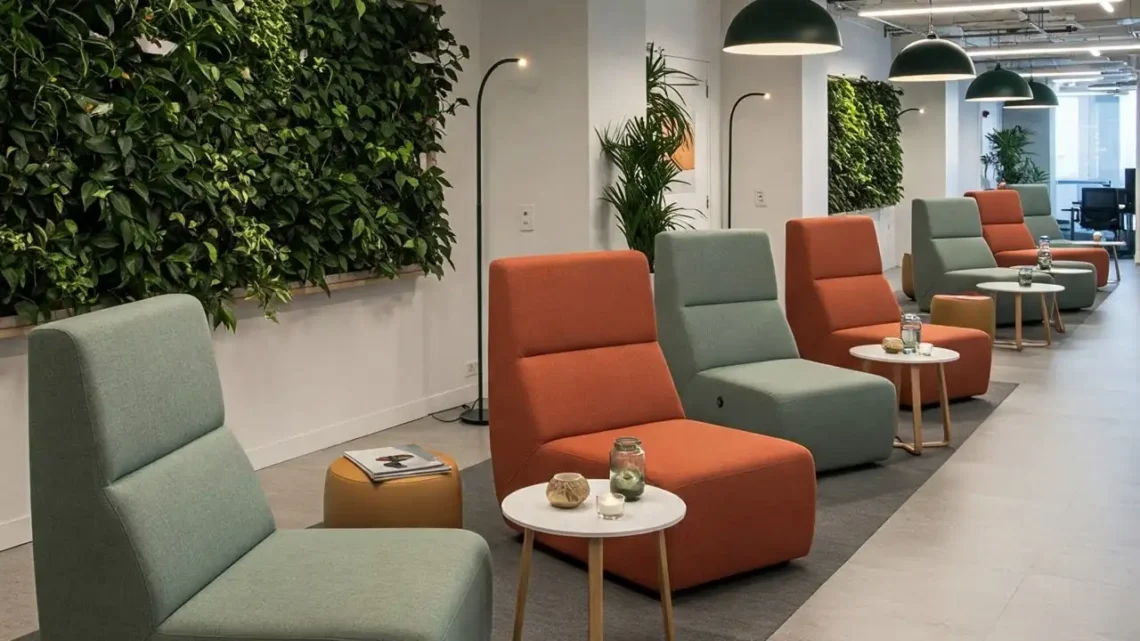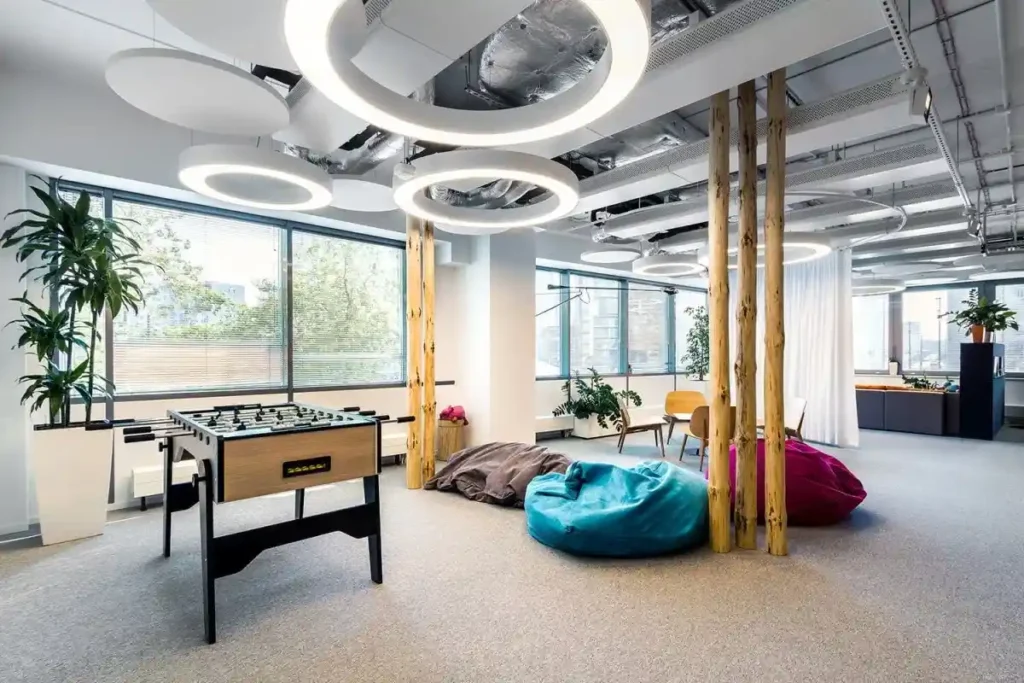
Relaxation areas near the workplace: balancing productivity and relaxation
In today’s world, an increasing number of online professions are being created that enable people to work from home. However, modern offices are not standing still; they are developing and becoming more comfortable.
Today, companies are paying more attention to creating conditions that promote productivity, resource recovery, and employee well-being. One of the leading ideas is to have relaxation areas in or near the work environment.
Trending Now!!:
They help reduce fatigue and stress, increase concentration, and maintain a balance between work and rest. In this article, we will discuss relaxation spaces, their importance, the solutions being implemented in companies, and how this affects employee performance.
The growing importance of relaxation areas in modern offices
As society develops, work processes do not stand still. In the 21st century, they have become more intense and saturated, and with the emergence of a large number of new professions, there is a need for highly qualified workers.
Digital tools, deadlines, and flexible schedules require individuals to maintain high concentration throughout the working day, which is not always easy. At the same time, experts increasingly emphasise that without regular breaks and rest, productivity can decline. Rest areas were introduced precisely to address this issue.
Companies are introducing lounge spaces with upholstered furniture, game rooms, meditation corners, or even outdoor terraces. Such decisions not only relieve tension but also create additional opportunities for informal communication between colleagues.
Communication in a relaxed atmosphere stimulates creativity and gives rise to new ideas that are difficult to find in a rigid working rhythm.
Good companies create relaxation rooms or areas, mini-libraries, and even integrate digital entertainment, such as consoles that can be played during breaks between work. This allows employees to choose the type of relaxation they prefer. The work-life balance approach is not only about relaxation outside of work, but also about integrating relaxation directly into the workspace.
Digital breaks: how gaming integrates into relaxation spaces
One of the main trends in workplace recreation has been digital activities, i.e., video games. Alongside classic lounge areas where employees can sit and relax, more companies are installing devices and other entertainment options.
These usually include game consoles, computers, or even mobile gaming corners. These tools serve a dual purpose, allowing employees to quickly switch from work tasks to leisure activities and simultaneously relieve stress.
Research in this area shows that short gaming sessions playing favourite games help relieve emotional tension and restore attention. Some people enjoy platformers, while others unwind by playing on CSGO gambling sites. However, the bottom line is that such activities help employees relax. Esports are also being integrated into such recreation areas.
In some cases, internal tournaments are even created among employees, which is not only fun but also fosters a little competition and increases the desire to win.
The role of the gaming industry in people’s lives has increased, and now it’s not only about hobbies, but also about work. Although work recreation areas usually focus on conventional video games, interest in esports and gaming in general helps companies create more engaged and modern environments for their employees. Gaming corners in offices are not about losing time, but about investing in restoring resources.
Outdoor relaxation zones: the role of nature in productivity

Open recreation areas have become an equally important aspect of office space development. Access to nature, even in the form of a small terrace or green corner near the building, has a significant impact on the psychological state of employees. Sunlight, fresh air, and contact with greenery help reduce stress and improve mood.
Some companies create mini gardens on rooftops or in courtyards, where trees are planted, allowing employees to relax during lunch breaks. Such places even host certain events, informal meetings, or parties.
This type of space enables people to seamlessly transition between work and rest, easily distract themselves from routine tasks, and foster their creativity. The natural environment creates conditions for new ideas to emerge, which are often impossible to replicate in a closed office space.
Physical activity is an essential factor in maintaining employee health. Short walks in the fresh air and exercises in the gym have a positive effect on blood circulation, help avoid fatigue, and boost energy levels. This supports employee health and reduces the number of sick days, which has a positive impact on the company’s profits.
Quiet rooms and mindfulness practices at work
Quiet rooms and mindfulness practices deserve special attention. Modern offices are increasingly creating spaces where employees can retreat, restore their inner balance, or engage in meditation. They differ from classic lounge areas in that they are not focused on active outdoor recreation, but on inner rejuvenation.
Mindfulness is gaining popularity among IT companies and other organizations that rely on mental work. It helps to effectively combat stress, increases concentration, and forms healthy work habits. Studies have shown that even a few minutes of deep breathing or meditation can lower cortisol levels and positively affect decision-making abilities.
Quiet rooms are increasingly found in large companies, and they can also serve as a universal space. Ranging from short reading breaks to a place to recover from difficult tasks. Such spaces must be accessible to all workers and not perceived as a “privilege for the elect.” This fosters an atmosphere of trust and maintains a balance within the team.
How relaxation areas transform corporate culture
The introduction of relaxation areas is more important than you think. It is significant not only in terms of increasing productivity, but also for the better functioning of the entire organisation.
When a company invests in its employees and creates a comfortable work environment, it forms a positive image of an employer that genuinely cares about its people. This helps to improve ratings and makes it easier to find good employees.
Recreation areas serve as a platform for exchanging ideas, strengthening team bonds, and fostering corporate values. They reduce burnout, create a sense of support, and increase motivation. As a result, employees become more loyal, and the business receives a long-term return on investment in comfort.
In today’s working environment, companies that invest in creating a high-quality workspace tend to be more successful. Therefore, building and furnishing relaxation areas should be considered not as an additional option, but as a strategy for the company’s development.
Conclusion
In this article, you have learned about the role of relaxation areas and that they are more than just a fashionable trend. They have become a vital tool for enhancing productivity and promoting the balance and well-being of employees.
Play areas, outdoor spaces, quiet rooms, and lounge areas are all important for reducing stress and promoting employee well-being. Companies that integrate such solutions gain an advantage over their competitors because productive and satisfied employees are the key to success.


